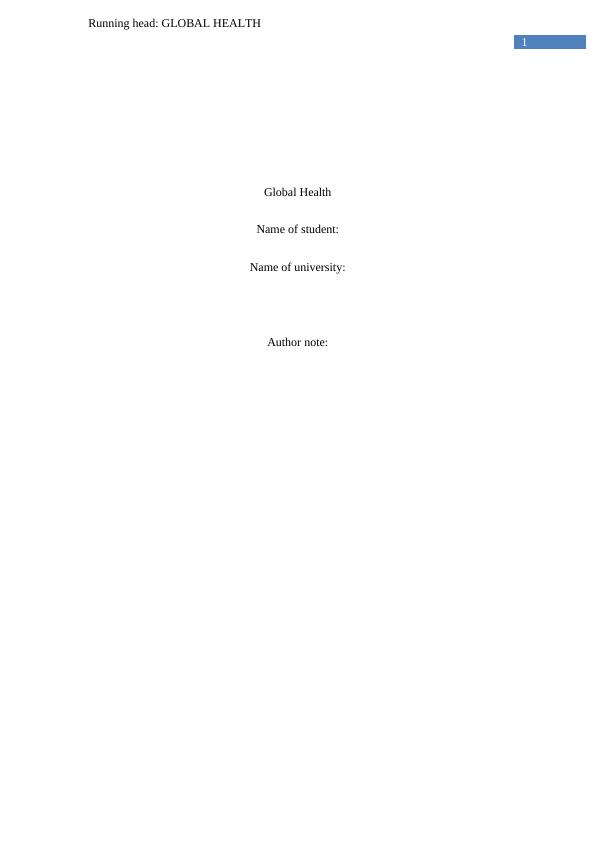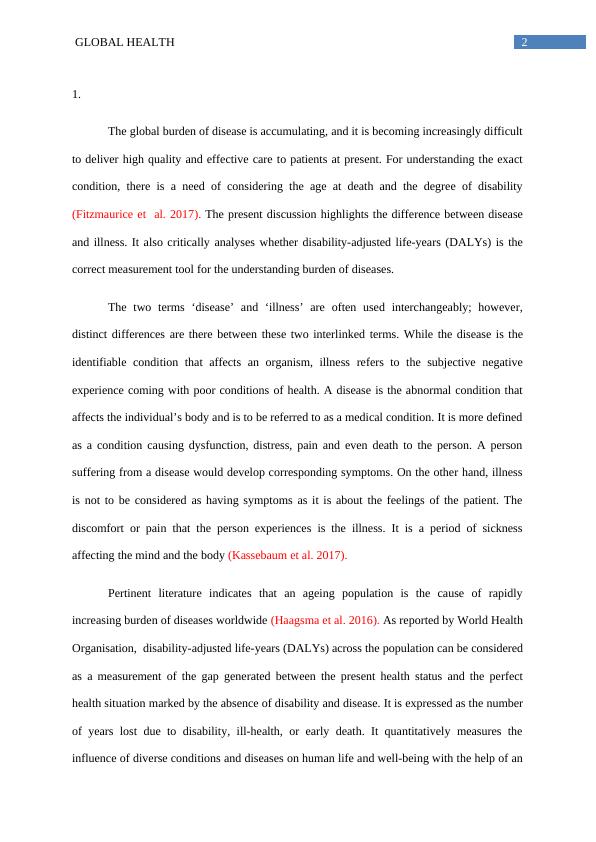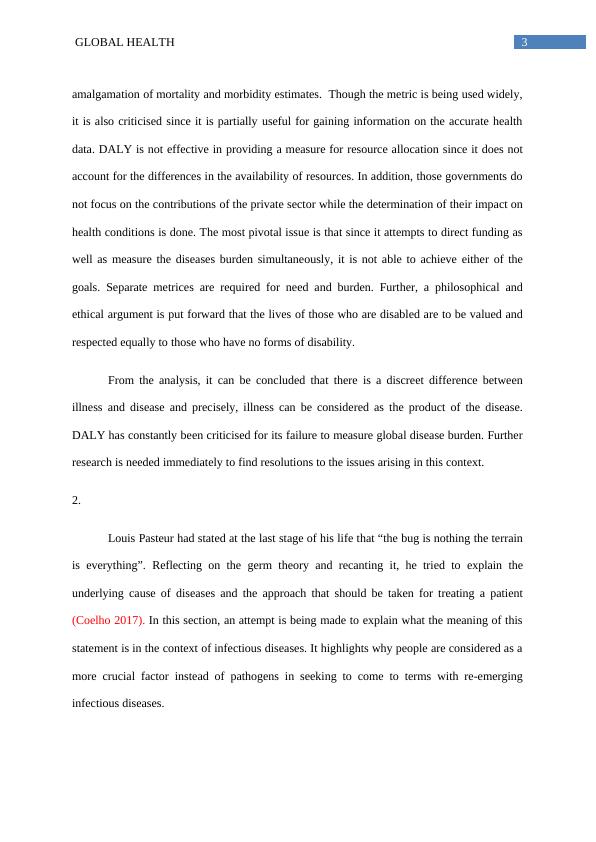Global Health GLOBAL HEALTH 1 Age at death and disability
10 Pages2878 Words82 Views
Added on 2020-04-07
About This Document
For understanding the exact condition, there is a need of considering the age at death and the degree of disability (Fitzmaurice et al. It also critically analyses whether disability-adjusted life-years (DALYs) is the correct measurement tool for the understanding burden of diseases. As reported by World Health Organisation, disability-adjusted life-years (DALYs) across the population can be considered as a measurement of the gap generated between the present health status and the perfect health situation
Global Health GLOBAL HEALTH 1 Age at death and disability
Added on 2020-04-07
ShareRelated Documents
End of preview
Want to access all the pages? Upload your documents or become a member.
Measuring the Global Burden of Disease
|4
|666
|417
Burden of a Chronic Condition
|15
|3954
|3
The Australian’s Health Policy PDF
|4
|889
|69
Depression among the Elderly in India
|14
|2779
|115
Cardiovascular Disease
|7
|1450
|39
2016 Australia’s Health Tracker Report on Obesity in Adults
|4
|842
|271



